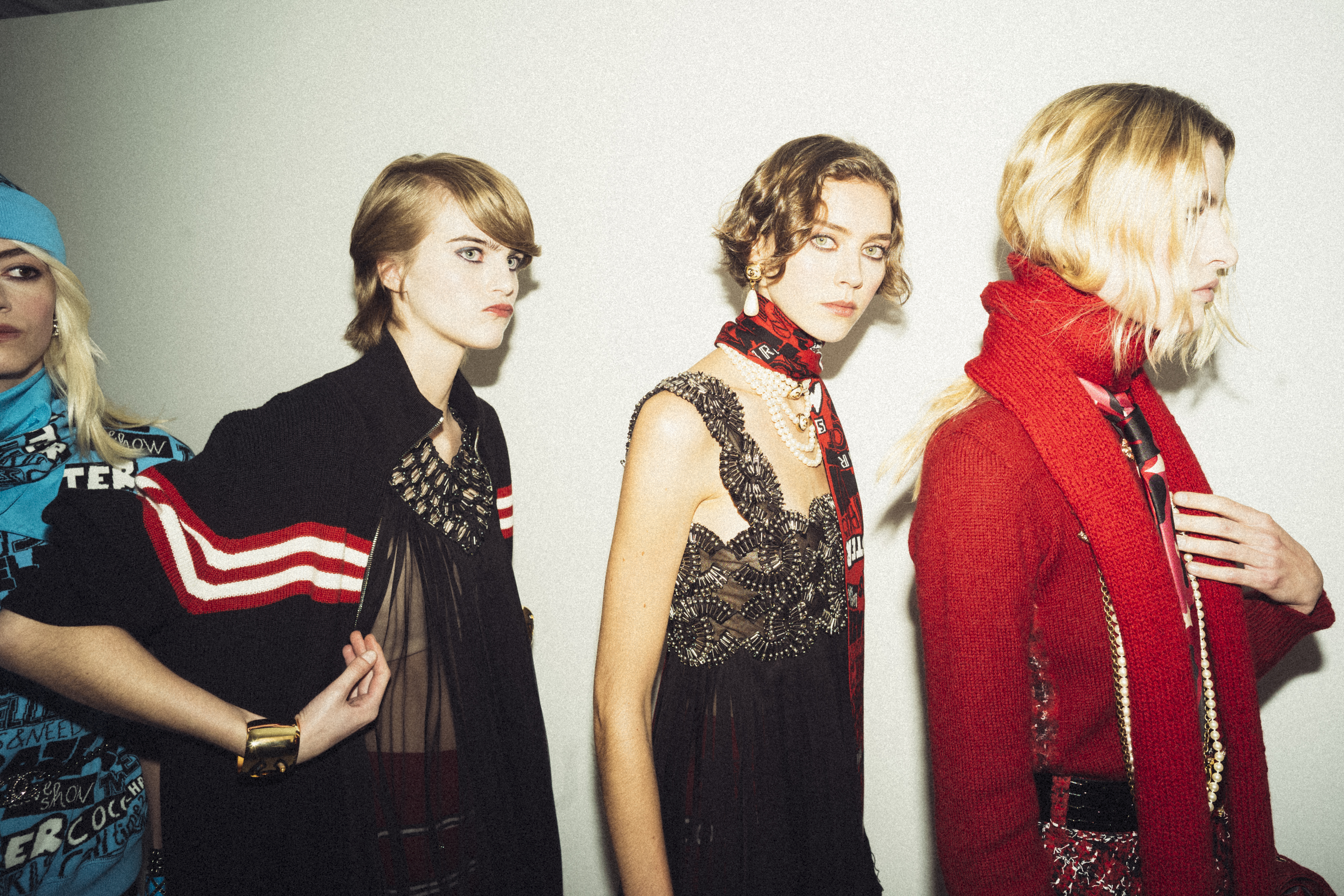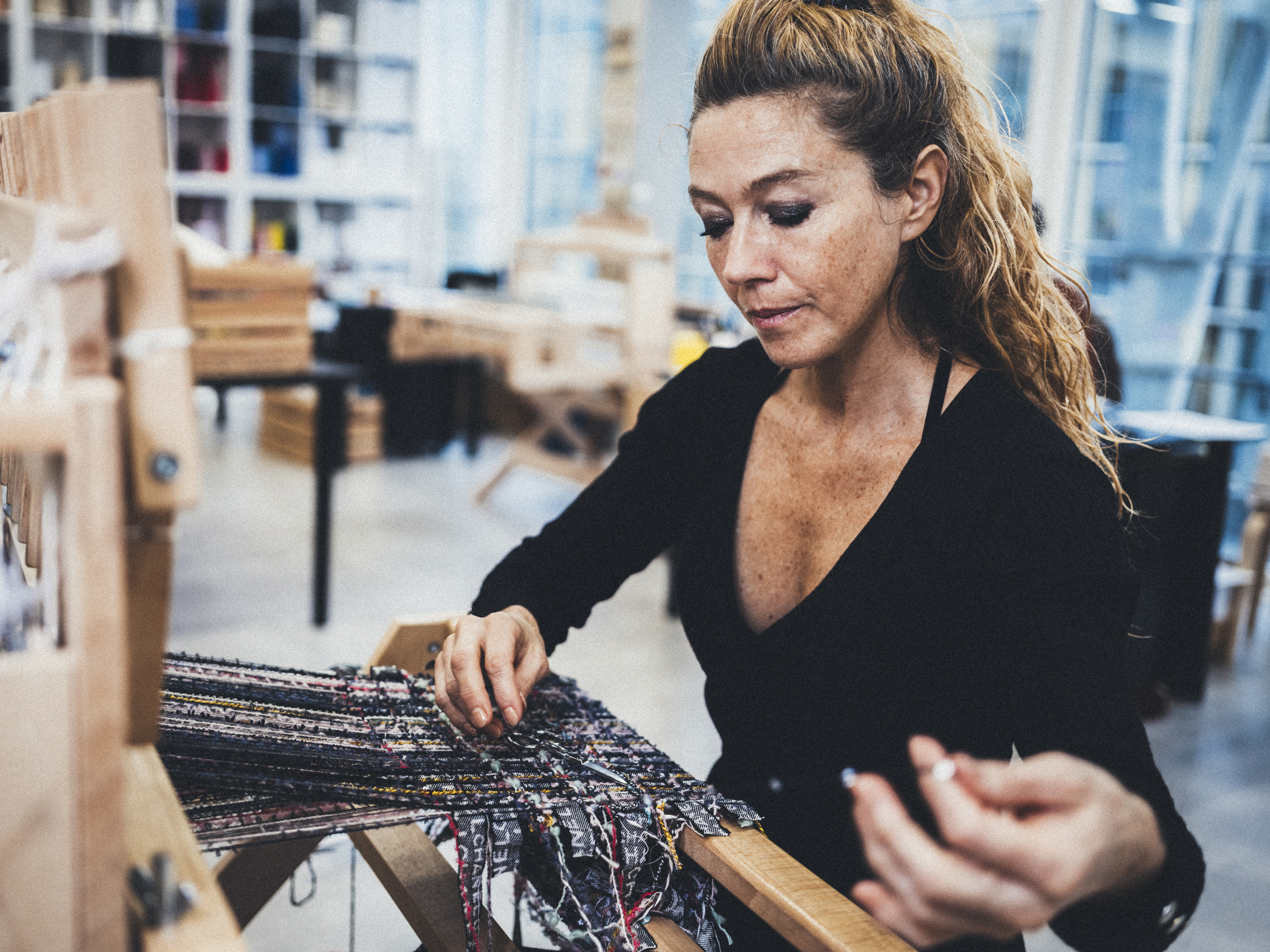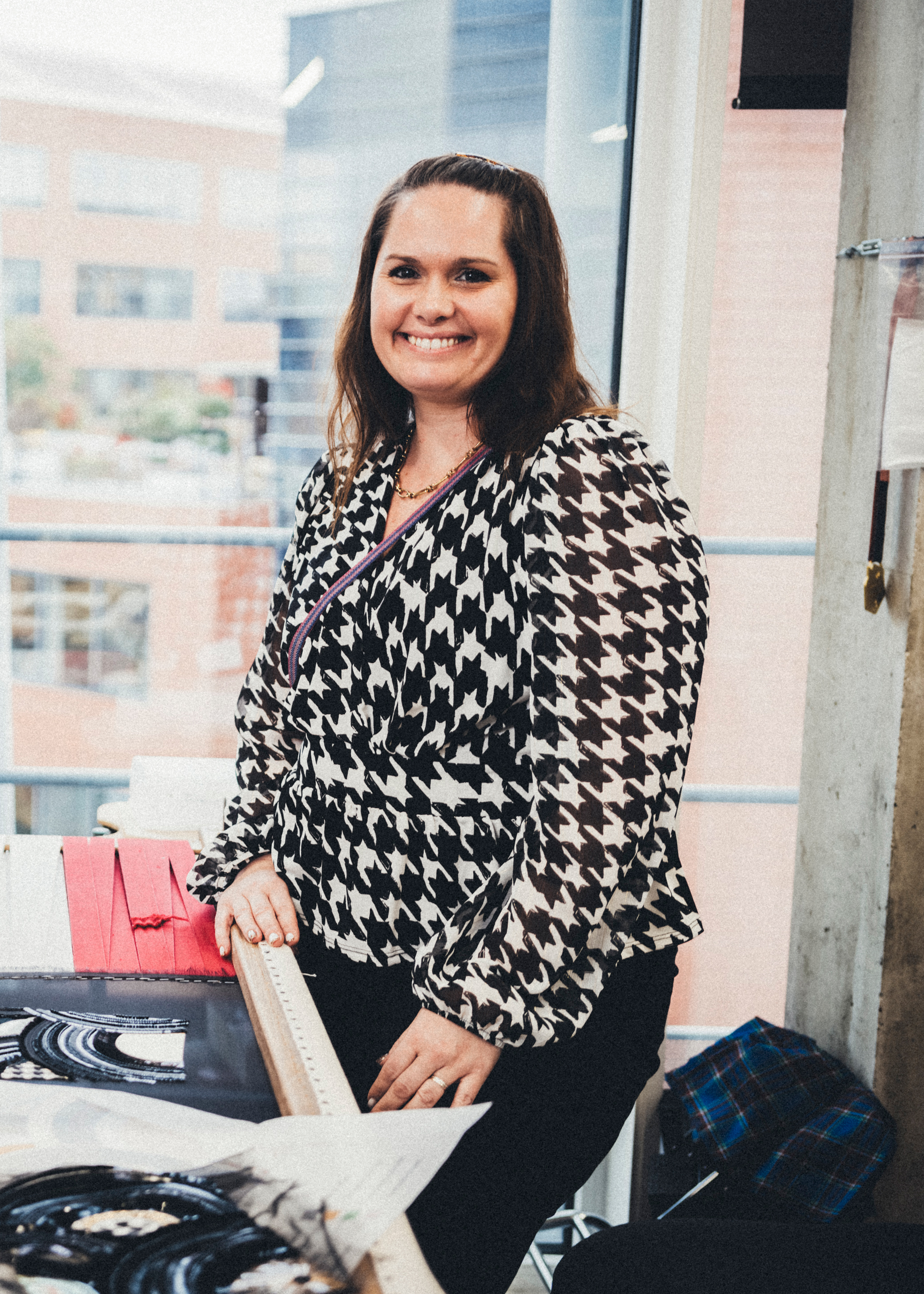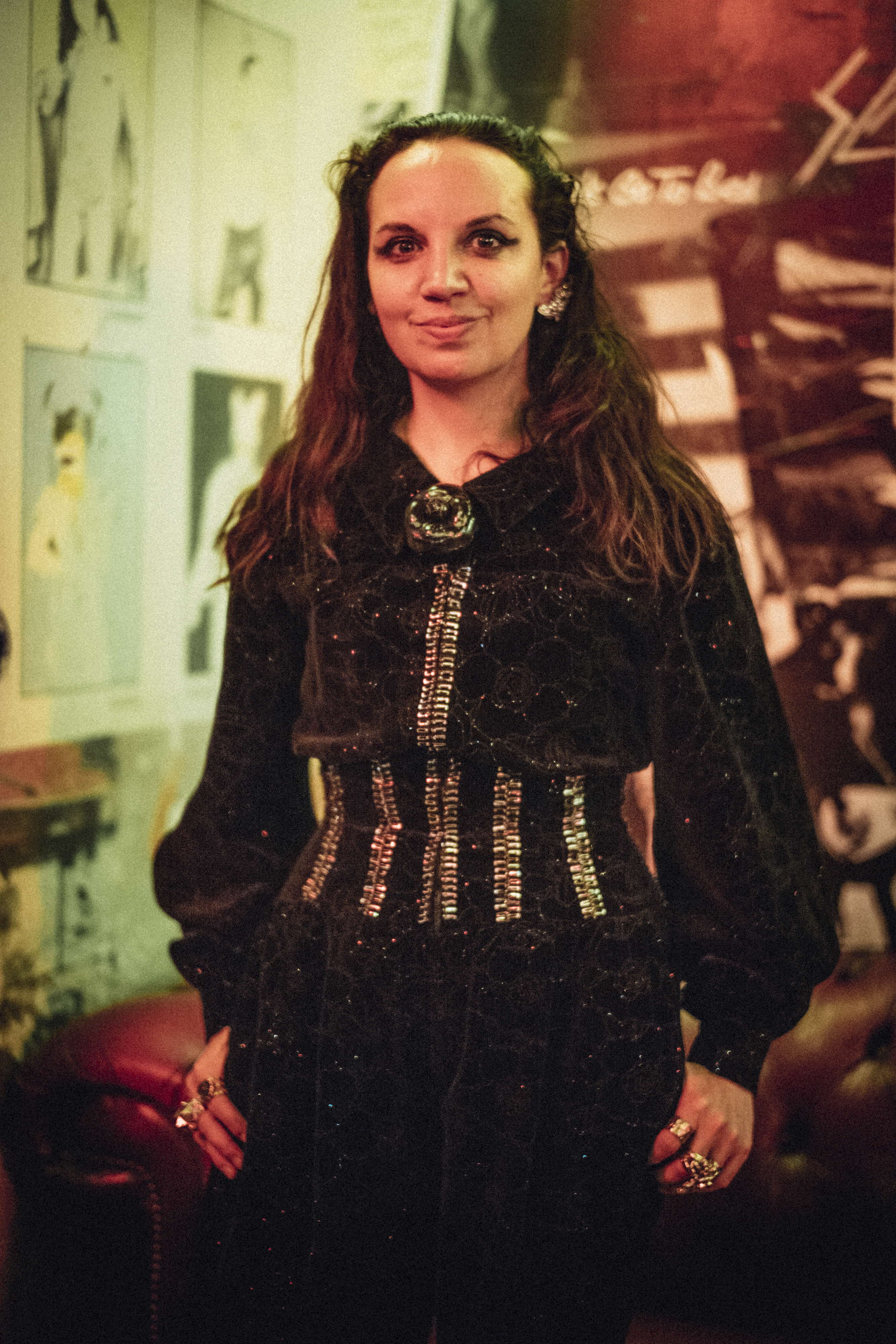
Last December, Chanel presented their Métiers d'art collection in Manchester, showcasing the incredible savoir-faire of the artisans we met in their ateliers in porte d'Aubervilliers.
"Trunks will be shut on 30th November, then shipped off to Manchester!" exclaims Aska Yamashita, the flamboyant artistic director of Montex, one of the Maisons d'art showcasing their work at Chanel's show on 7th December in the North of England. Two weeks ahead of the show, and the countdown is on to finish the 79 outfits started at 19M, in the 19th arrondissement of Paris.
Under a rainy sky, this 25m2 glass and concrete structure by architect Rudy Ricciotti is reminiscent of a loom, elegantly spinning white thread. Since 2019, it has been the home of the so-called 'Métiers d'art' ateliers which are affiliated with Chanel. Among them: the embroiderer Lesage, Lemarié, who specialises flowers and feathers, bootmaker Massaro, Montex, the embroidery and decoration atelier... Some of these, which Chanel bought as early as 1985, were founded in the 19th century and continue creating for the iconic double-C house, as well as for other couture and ready-to-wear labels. The show in Manchester is the annual grand ball showcasing their excellent savoir-faire.

On this cold morning, there is a studious atmosphere in the passageways of 19M, a veritable modernist labyrinth leading you to the wildest of dreams, be they woven with sequins, camellias (the house's iconic flower) or tweed. Around 600 artisans, 81% of whom are women, work there. It all started when Virginie Viard (artistic director of Chanel) came to 19M to share her ideas and select samples," says Aska Yamashita. And so Manchester, the city of pop and an old industrial town dominated by football, famous for its cotton industry in the 19th century, and for being the birthplace of the British queen of the suffragettes, Emmeline Pankhurst, in 1858.
"I didn't want rock-inspired looks. To create this collection, I was inspired by the women who are in love with musicians. Tweed is the central element, but I didn't want to recreate Gabrielle Chanel's looks when she wore the Duke of Westminster's jackets. I took inspiration from the Coco who added colour to her tweeds. I added a bit of pop effervescence," explains Virginie Viard.

The scene: on the evening of the 7th November, the Mancunian night is lit up by vibrant tweeds, bright greens, pops of fuchsia and orange. On the models, including the unapologetically British Edie Campbell and Karen Elson, notably punk details (subtle leathers, safety pins emblazoned with a double C), and kitsch English details (beautiful tea cups embroidered on bags) as well as nods to popular culture (football T-shirt shields). And of course a bit of 'Madchester' energy throughout, that rock 'n' roll energy that leads girls to throw themselves across soaking concrete. A stand-out look: a gown by Montex, adorned with sequins reminiscent of vinyls.

It is a nod to the city where The Smiths, Joy Division, New Order, Oasis and other greats were born. It is the birthplace of Factory Records, purveyor of new sounds and iconic albums under the helm of Peter Saville. In 1982, the Hacienda was the cult nightclub sending vibrations through the whole city. That very same Peter Saville, now an in-demand luxury artistic director, came aboard the 'Chanel Tour' in the English city (and scored the music for the show). "The Factory, heavily inspired by the avant-guarde ear between the wars, is a movement created by young people saying 'f*** you' to society, who wanted to disrupt with a form of aesthetic terrorism, decrypts Michka Assayas, author of in a Lonely Place. This aesthetic was minimalist, worn in almost secrecy: there was no publicity allowed, names of bands were barely visible on sleeves, even the Hacienda logo could barely be scene on the wall. Factory artists were guided by a utopian ethic, "a lucid and dark view of society".

A heritage remixed by Chanel, with a softened touch. The verve of DJ Dave Haslam, prince of the Hacienda, reminds us that, "certain revolutionaries have become the establishment". But behind Manchester, "the Pop Cult City", the title of one of his books, lies a "city always so proud of its radicalisation, of its spirit of independence and even resistance, of its love or risks," he insists. "I was fascinated by this rebellious music scene, I wanted to show this contrast by almost mistreating tweed, by tweaking it and tearing it", details Christelle Kocher, artistic director of Maison Lemarié, who embraces "this irreverence unique to the British, this mix of punk and aristocratic."

Far from the Mancunian fervour, at 19M, no music can be heard in the ateliers. Artisans concentrate everywhere, there is an almost solemn atmosphere. Time is ticking to finalise the samples and establish their "identity cards" to develop them on a greater scale, in factories in Pau and in Italy, for the show. The Metiérs d'art today face one of the fashion industry's toughest challenges: a greater respect for biodiversity. At Lesage, samples of eco thread (recycled or made of organic cotton, some labelled Ecocert) line the entire wall of the atelier.

"For a few years now, Chanel has started its transition to a more sustainable business; we support our Maisons d'art, who are the heart of our activity, in this journey," explains Bruno Pavlovsky, President of fashion activities and Metiérs d'art of Chanel. "The traceability of fabrics, the conditions in which our products are made are of upmost priority to our Maison" he adds.
"At Lemarié, we use animal feathers, our aim is therefore to provide total transparency of the entire production chain. We work with our own farms to ensure this. The question that I'm passionate about is, 'how do we set the example?'" says Christelle Kocher.
"Oh Manchester, so much to answer for", chant the Smiths, in their song Suffer Little Children. The stylist's favourite band.








